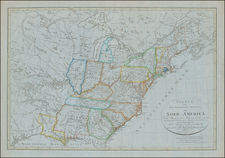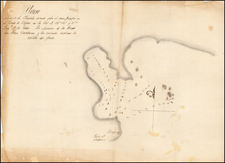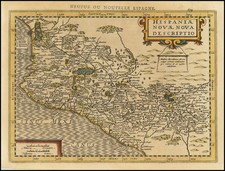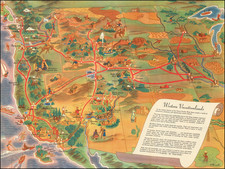Mexico at War With France -- With Fort Leaton, Texas
Rare separately published map of Mexico, illustrating Mexico at the outset of the Second Franco-Mexican War.
The map provides a highly detailed treatment of Mexico, as well as fine overview of the roads, towns and forts in the American Southwest.
One of the more noteworthy features of the map is the location of Ft. Leaton, Texas. Fort Leaton is believed to have been built as an adobe residence in the 1830s by Juan Bustillos. In 1848, it was acquired by Benjamin Leaton, who lived in the structure and also used it as his trading post and fortress. Benjamin Leaton was a trader, freight hauler along the Chihuahua Trail, and a bounty hunter paid by various local governments in Mexico for each scalp taken from an indigenous person. He also traded munitions to the Apache and Comanche for any stolen cattle they brought him. When Presidio County was established in 1850, Fort Leaton was its first seat of government. Leaton died in 1851, and his widow married Edward Hall who continued operating the freight business from the fort. Hall became financially indebted to Leaton's scalp hunting partner John Burgess. Hall defaulted on his debt to Burgess in 1864, and was murdered. Burgess took over the fort, and was in turn murdered by Leaton's son in 1875. The Burgess family remained in the fort until they abandoned it in 1926.
Second Franco-Mexican War
The Second French Intervention in Mexico or Second Franco-Mexican War, was an invasion of Mexico, launched in late 1861, by the Second French Empire (1852-70). Initially supported by Britain and Spain, the French intervention to Mexico was consequence of President Benito Juárez's suspension of loan-interest payments to foreign countries in July 1861, which angered the French, British, and Spanish creditors of the Mexican Republic.
To extend the influence of Imperial France, Napoleon III instigated the intervention in Mexico, by claiming that the military adventure was a foreign policy commitment to free trade. The establishment of a friendly monarchy in Mexico would ensure Europeans' access to Latin American markets; and French access to Mexican silver. To realize his imperial ambitions without other European interference, Napoleon III entered into a coalition with Britain and Spain, while the U.S. were occupied with their American Civil War (1861-65), and unable to enforce the Monroe Doctrine.
On October 31, 1861, France, Britain, and Spain agreed to the Treaty of London, in a joint effort to extract repayments from Mexico. On December 8, 1861, the Spanish fleet and troops arrived at Veracruz, Veracruz. When the British and the Spanish discovered that France had unilaterally planned to seize Mexico, they withdrew from the coalition. The subsequent French invasion created the Second Mexican Empire (1861-67), a client state of imperial France.
Moreover, in Mexico, the Roman Catholic Church, upper-class conservatives, and some Indian communities welcomed, accepted, and collaborated with the French-imposed monarchy. The presidency of Benito Juárez (1858-71) was interrupted by the imposed rule of the House of Habsburg in Mexico (1864-67). In political reaction to the Liberalism of President Benito Juárez and his government, the conservatives and much of the Mexican nobility tried to revive monarchy by collaborating with the French foreigners to install an Austrian archduke, Maximilian Ferdinand, as the Emperor Maximilian I of Mexico.
Politically, the French intervention to Mexico reconciled the Second French Empire and the Austrian Empire, whom the French had defeated in the Franco-Austrian War of 1859. French imperial expansion into Mexico counterbalanced the geopolitical power of the Protestant Christian U.S., by developing a powerful Roman Catholic empire in Latin America, and the exploitation of the mineral wealth of the Mexican north-west. After much guerrilla warfare that continued after the Mexicans' Capture of Mexico City (1863) - the French Empire withdrew from Mexico and abandoned the Austrian emperor of Mexico; subsequently, the Mexicans executed Emperor Maximilian I, on June 19, 1867, and restored the Mexican Republic.













![The Rise, Progress and Prospects of the Republic of Texas [including:] Map of Texas, compiled from Surveys recorded in the Land Office of Texas, and other Official Surveys, By John Arrowsmith. [and:] A Map of the Republic of Texas and the Adjacent Territories, Indicating the Grants of Land Conceded under the Empresario System of Mexico.](https://storage.googleapis.com/raremaps/img/small/94046.jpg)
